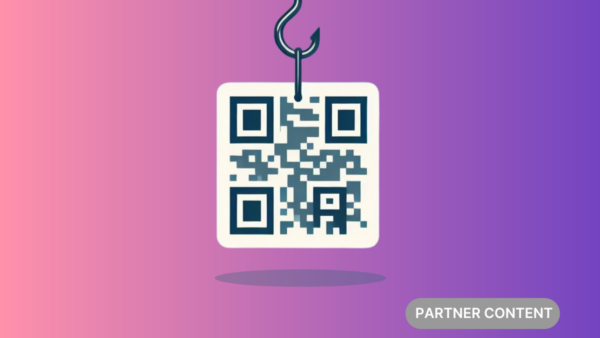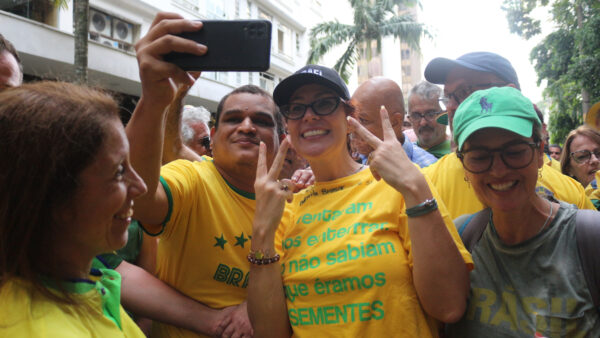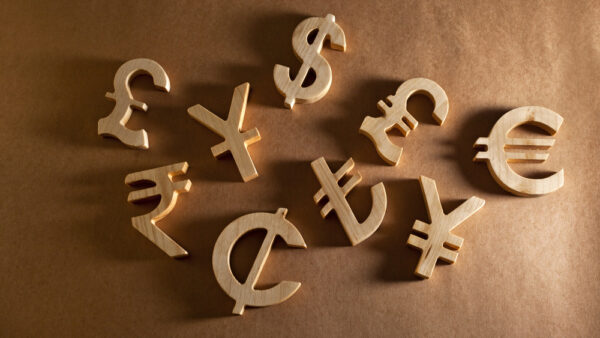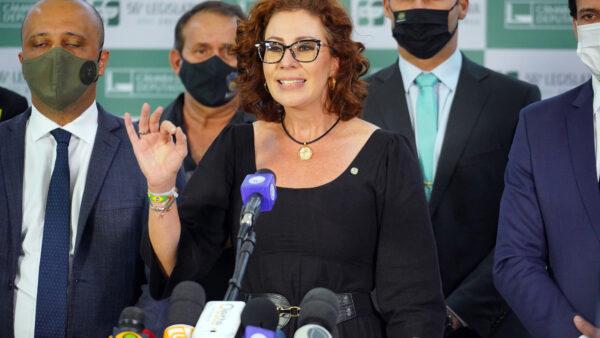Although our 1985 elections were indirect, they are widely hailed as the beginning of modern Brazil – also known as the New Republic. Tancredo Neves was officially elected, but severe health problems meant that his VP, José Sarney, had to step in on the eve of his inauguration. Unfortunately, Sarney didn’t quite get off to the promising start many had hoped for.
We Brazilians don’t typically reflect on the 1980s with nostalgia or fondness. International interest rates caused our already enormous levels of debt to grow even larger, and prices were readjusted daily – some even several times a day. Those who remember the period well sometimes recall that supermarket products were more expensive later in the afternoon than they had been on that very same morning.
Inflation rates reached 80 percent a month – yes, a month. That’s one of the reasons why we Brazilians are in the habit of shopping for our groceries monthly – a behavior that’s only now starting to change – and why we care so little for coins. Cents were worthless. Between 1986 and 1993, Brazil changed its currency five times.
Democratic elections, at last
In 1989, Brazilians voted for our president for the first time since 1960. The election was decided in a runoff stage between Fernando Collor de Melo, a son of a Northeastern oligarch family, and Luiz Inácio Lula da Silva, a bearded, former union leader who flaunted his socialist beliefs. During the campaign, Collor fueled rumors that Lula would confiscate whatever money Brazilians had in their bank accounts. His tactic was effective, and Collor won the presidency in a close race. Ironically enough, though, his administration confiscated all savings on his very first day in office.
Collor’s agenda included opening up the public sector to privatization, opening markets to free trade, and about industrial modernization. His reforms were unpopular among the public and before long proved inefficient. As he lost public support, corruption accusations began to rise. Congress took the opportunity to oust him from office in 1992, when he was formally charged by the Supreme Court with corruption and the forming of a criminal association (he was later found not guilty on all counts).

In 1992, Collor’s vice-president Itamar Franco stepped in to fulfill the rest of his predecessor’s term. He introduced a new currency, the Brazilian Real, and managed to bring about enough economic stability for the Real to endure.
In 1994, his Finance Minister Fernando Henrique Cardoso, a.k.a FHC, was elected and continued to steer Brazil towards a steady recovery. Under FHC’s two terms of guidance, Brazil introduced constitutional amendments to open the economy to further foreign investment, and also implemented reforms to reduce public sector spending and improve government efficiency. Some industries, like energy, oil and aviation, were the target of more extensive regulation, while other state-owned ventures were privatized.
Yet as Brazil’s focus on center-right privatization endured throughout the 1990s, a sweeping ideological change was breaking through the political rankings: the increasingly popular, left-leaning Workers’ Party, headed by Luiz Inácio Lula da Silva.
The 2000s
With little formal education, Lula had quit school and worked as a shoe-shiner and street vendor from the age of 12 to help his family. And while working in an automobile factory at 19, he lost part of his finger. From this point, he began collaborating with workers’ unions, pushing for workers’ rights in Brazil and becoming one of the most prominent voices of resistance against the military dictatorship. The 2002 elections were his fourth time running for office; he won the runoff stage by a landslide, with 60 percent of the votes.
The Workers’ Party brought efficiency to poverty reduction programs, unifying them all as the now famous Bolsa Família. With time, Brazil was no longer featured on the UN’s World Hunger Map. But he also turned Brazil into a more significant international power, pushing for greater involvement in international relations. A skilled orator, Lula took Brazilian soft power to a level never before seen.

He was also the lucky beneficiary of good timing: the discovery of vast oil reserves in Brazilian territory propelled the economy upwards, helping us to win bids to host the Pan-American Games, the FIFA World Cup and the 2016 Olympics.
Lula and the Workers’ Party proved so popular that his successor, Dilma Rousseff, was elected for a further two terms after Lula himself – even without any prior electoral experience.
Rousseff, too, had played a role in left-wing resistance movements to the dictatorship, and had worked her way up the rankings within the party. By the time she assumed the role of Brazil’s President in 2010, the Lula government’s socioeconomic initiatives had seen the middle class swell. But this was accompanied by a growing dissatisfaction among the population when it came to basic rights, high taxes, and Brazil’s persistent ghost – inflation.
The trouble really began after the global commodities crash slashed the value of Brazil’s oil wealth, triggering a financial crisis. By 2013, dissatisfaction was so high that a proposed 0.20 BRL increase to bus fares sparked nationwide protests. However, these protests quickly became a sign of an ever-increasing popular discontent.
In 2014, months after the first news broke regarding ongoing political corruption saga, Operation Car Wash, Rousseff was elected for a second term. But with the economic and political crises forming a two-pronged attack on Brazil, Rousseff grew steadily more unpopular among both the population and her peers in Congress.
In August 2016, she was impeached for doctoring the federal budget and replaced by her vice president, Michel Temer – who then legalized the very methods she was impeached for just two days later. Temer’s government has recorded the lowest political approval ratings of all time – as low as 2 percent in some polls – while pushing through a series of harsh, vastly unpopular austerity reforms.
Temer, who promised to conduct a peaceful transition towards the 2018 presidential election, has done anything but. Upon taking office, he named an all-white, all-male cabinet, filled with men facing corruption accusations. Temer himself had to deflect an indictment request by Brazil’s Prosecutor General, after he was caught in an audio recording discussing the bribery of public officials. But as Temer conducts an administration focused on pleasing the political class, little room is left for his opposition to take him down.[/restricted]










 Search
Search






































